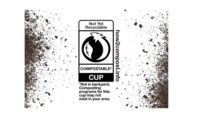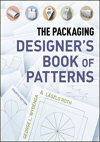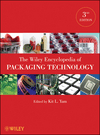Labels & Labeling: Labeling Technology
The Next Generation of Labeling
Andy Cook, managing director of FFEI – a UK-based supplier of digital imaging technology – offers his insight on the labeling industry.

Q: Briefly explain your company’s role in label converting.
Andy Cook: Label converting is undergoing revolutionary changes that are challenging both the technological and financial side of businesses. Digital printing has reset the expectations of print buyers in terms of quality, quantity and speed of delivery, sending shockwaves along the whole length of the supply chain.
To be truly effective, the digital press ideally needs to be able to print to the same color and quality standards, and on the same substrates, as the analogue jobs. With this flexibility, decisions on which jobs should be run conventionally or digitally can be made on the basis of production requirements, not just run length.
Taking account of the whole picture is part of the digital proposition, and that’s what we tried to do when developing the Graphium digital inkjet press. We are on a mission to really change the way people view and use the technology. We see many new opportunities for converting traditionally printed applications to inkjet digital. The potential in this technology to evolve is huge, and inkjet technology in a narrow-web format is really just starting to push the boundaries of what’s possible to print.
Q: What is your company’s newest product(s)?
Andy Cook: Last year, we announced the launch of Graphium – our second-generation digital inkjet press – and invested a lot of time and effort to talk to customers, prospects and opinion leaders in the field.
Graphium is a modular digital UV inkjet press that puts choice, flexibility and productivity into the users’ hands, allowing them to embrace complex projects requiring a wide color gamut on virtually any substrate. Graphium has the unique capability of integrating optional flexo stations for hybrid production and optional inline finishing for converting in one pass.
Graphium takes its name from a genus of vibrantly colored butterflies. During their lifetime, they represent a truly stunning transformation; one we feel is echoed by Graphium’s ability to convert digital files into high quality labels and specialty print. Ultimately, we wanted to develop a new generation of digital inkjet press aimed at the narrow-web market, offering high-quality print, unparalleled productivity and enabling the most versatile range of applications.
Q: What are some new trends you see developing in the labeling industry?
Andy Cook: As a whole, I believe that inkjet will become the dominant technology for label converters. Its benefits of rapid job changeovers, high print quality and substrate versatility mean that an extremely wide range of label jobs can be handled.
Label converters continue to need to increase margins; at the same time, they need to respond to brand demands for higher print quality and color standards, and environmental demands. As a result, converters are optimizing services, becoming more efficient, more automated and finding ways of selling more to existing customers.
The recession put pressure on brands who have responded with more SKUs to increase shelf-presence. Along with product proliferation, they have demanded a wider color gamut (the increase in the use of orange in branding is noteworthy) and bolder designs to maximize attention. Cross-media initiatives have seen the rise of quick-response codes to take consumers to websites for special offers, contests and other data-collection opportunities while enhancing the customer experience. Some label converters are even offering web services to ensure that the QR links are worth following.
Q: What do you believe is missing from the industry?
Andy Cook: As with any industry, there is continual room for improvement. In the labels industry there is still the need for greater awareness of the potential and possibilities of digital labels by brands and agencies.
More digital finishing equipment is needed for easy, automated job change-overs, with selection and configuration of enhancements automatically programmed by bar or QR codes for minimal operator intervention.
Presses with speeds that make inline finishing more efficient will increase the migration to digital, as will wider web widths. With scalable inkjet technology, FFEI and Graphium are well placed as part of the foundation for these developments.
FFEI
www.ffei.co.uk
Looking for a reprint of this article?
From high-res PDFs to custom plaques, order your copy today!









